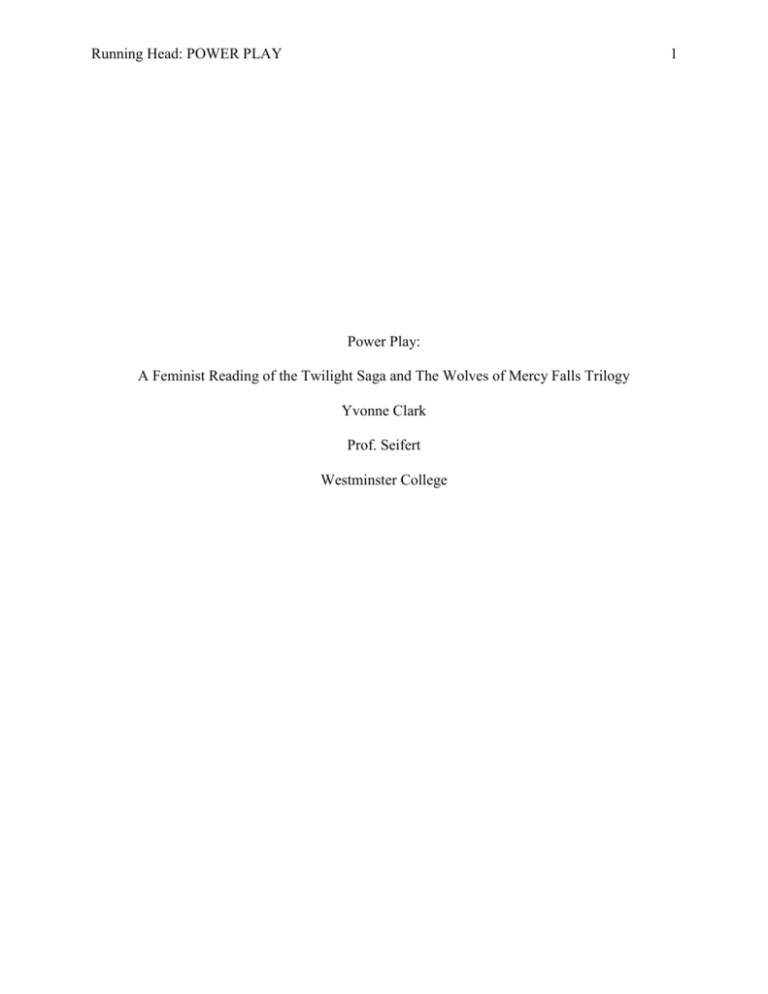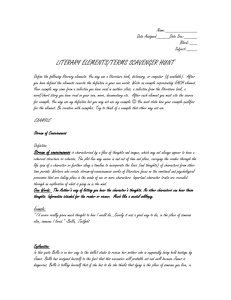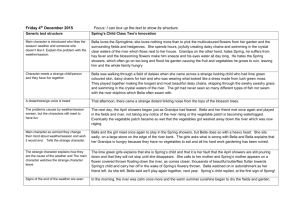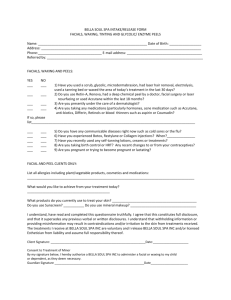
Running Head: POWER PLAY
1
Power Play:
A Feminist Reading of the Twilight Saga and The Wolves of Mercy Falls Trilogy
Yvonne Clark
Prof. Seifert
Westminster College
POWER PLAY
2
Introduction
In this paper I would like to discuss how gender norms are constructed and maintained
within two separate series’ of young adult novels, The Twilight Saga and the Wolves of Mercy
Falls Trilogy (Myers, 2005; Stiefvater, 2009). I will first go over gender typical behavior and
stereotypes, move on to discuss an overview of the novels and then analyze the importance of the
character’s names, legitimizing myths for males and females, the supernatural element in the
novels, the subtle differences in power and end with a discussion on why these gender role
expectations are in place, and how they could be affecting the audience.
The characters in the popular young adult series’ of The Wolves of Mercy Falls by
Maggie Stiefvater and the Twilight Saga by Stephanie Myer are constructed in such a way that
they reproduce a systematic power disparity. This power disparity is that between men and
women; women are represented in a stereotypical fashion that leaves them weak in deference to
men. To highlight this relationship through feminist analysis, the example of the main
protagonist Bella Swan and her male counterpart Edward Cullen in the Twilight Saga, and Grace
Brisbane and her male counterpart Sam Roth, are found to show women as physically inferior,
emotionally insecure and out of control, and behaviorally untrustworthy.
The behaviors of the protagonists Bella and Grace are legitimizing myths that reinforce
the particular sexist stereotypes of women being weak, less intelligent, emotionally high strung,
out of control beings. This representation is then sold to a mass market audience of readers,
many of whom are young and actively searching for male or female role models, and the
implications of internalizing sexist beliefs can be very harmful, even leading to depression in
some cases when females realize how inferior to males society wants them to be (Girgus, &
Nolen-Hoeksema, 2006).
POWER PLAY
3
Gender Typical Behavior
Gender typical behaviors are behavioral traits that are stereotyped as being
overwhelmingly masculine or feminine traits. These traits are then the norm for behaving as a
male or female should behave, or is expected to behave in society (Crawford, enter date). Bem
and Lewis conducted a survey within a large sample in 1975 and took the most popular
descriptors for gender traits and complied them together. Masculine traits are generally seen as
self-reliant, aggressive, loyal and strong, while feminine traits are seen as being yielding, moody,
jealous, unreliable, gentle and tender (Bem & Lewis, 1975). These traits may have positive and
negative aspects in and of themselves, but once they are tied together they display an
overwhelming trend, with positive and powerful traits being more masculine and negative or
weaker traits being seen as feminine.
A Narrow View of Feminist Theory
Legitimizing myths are one of the prevailing ways that the dominant power structures
and discourses are continued in a society; feminist psychologist Mary Crawford defines
legitimizing myths as: attitudes, values and beliefs that serve to justify the hierarchical norms
(2006). Common legitimizing myths are that women are fundamentally different from men, they
are weaker than men, women are less intelligent, incompetent, helpless, overemotional, fragile,
and in need of control, or to take a benevolent sexist point of view, to be put on a pedestal
(Crawford, 2006).
A stereotypical woman is soft spoken, small, pretty, skinny, white, middle class and
heterosexual; she is gendered, and as such, is from birth put into a system that dictates access to
power and resources, a system that controls the way relationships between other women and men
are shaped (Crawford, 2006). Crawford reports some shocking statistics taken by the United
POWER PLAY
4
Nations as of 2009, that are real world examples of the stereotypes that both the Twilight Saga
and the Wolves of Mercy Falls trilogy exemplify in relation to the power inequality between men
and women:
Women have less power in society and make up only 18% of the world’s political
power.
Men have more wealth and leisure time than women.
Men on average, have a higher level of education than women do.
Marilyn Frye sees these power disparities, these interactions in women’s day to day lives,
as wires in the bird cage of oppression (Frye, 1983). One wire alone, like the education gap from
the statistics above, can be overcome in an individual’s life, or helped to equalize with policies
like affirmative action; a bird can easily fly or step around one wire. However, Frye points out
that this is not how the world operates; a woman’s gender, race, sexual orientation, ability, and
age all intersect and connect with one another to mold and immobilize women (1983). The
gender norms and legitimizing myths presented in the young adult series’ of the Twilight Saga
and the Wolves of Mercy Falls represent a wire in this bird cage and both series’ feed into
legitimizing myths and reinforce sexist attitudes towards women.
Summary of the Novels
I would like to give you a quick overview of the 7 novels in these two series that I have
looked at. The Twilight Saga is an extremely well known and popular paranormal romance told
from the female protagonists’ perspective and the books focus largely on the heterosexual
relationship between two characters, Bella and Edward (Meyer, 2005). The Wolves of Mercy
Falls trilogy is a little less known, and switches between first person accounts told from both the
main female and male protagonists; like Twilight, the Wolves of Mercy Falls focuses largely on
POWER PLAY
5
the heterosexual relationship between the characters Grace and Sam (Stiefvater, 2009). I
maintain that both novels reinforce stereotypical gender roles in the characters, which support a
power disparity between males and females.
Vampires and Werewolves through the Feminist Lens
Beginning with the names of the characters, we see gender stereotypes immediately. Both
of the females have names that fall in line with typical feminine traits. Bella in Italian means
“beautiful” or “nice” (Dictionary.com, 2012). The character’s last name also plays into feminine
traits as a swan is a bird who is often associated with women; a beautiful bird that is white to
represent purity. Interestingly enough, a secondary character in the Wolves of Mercy Falls series
is also named Isabella (Stiefvater, 2009). The Wolves of Mercy Falls’ protagonist also as has a
gender stereotype as a name; Grace. Grace means “elegance or beauty of form, manner, motion,
or action” (Dictionary.com, 2012). This definition is very similar to the descriptors of “tender,
gentle and yielding” on the Bem Sex Role Inventory List (Bem & Lewis, 1975). However, the
male characters have names without those associations. Edward and Samuel are not immediately
associated with masculine characteristics like “aggression” and “independence”. The males in
these series are not immediately stereotyped into their gender norms from their names, while the
females are.
Physically, Isabella Swan fits the description for a stereotypical Western woman, as she
is described in the novels as the perfect intersection of the small, short, pretty, pale and clumsy
girl (Myer, 2005). Bella is smaller in stature than all of the male characters of the novel,
reproducing on a physical level a power structure indicating that males are bigger and stronger
than females. Grace is also short, small, pretty, and pale and these two characters together begin
to form the stereotype for a woman; someone who is always weaker than a man based on
POWER PLAY
6
physical size alone. In fact, there is no mention of a male who is weaker than Grace in the entire
series (Stiefvater, 2009; Stiefvater, 2010; Stiefvater, 2011).
Comparing Bella to her counterpart Edward makes her even less formidable. Edward is a
preternatural being, and as a vampire he is almost invulnerable to death. Tying back to
Crawford’s legitimizing myths that support sexist views, both young adult series represent men
and women as fundamentally different, just as humans and vampires or werewolves are different
from one another (2006). “You’re indestructible,” Bella mumbles, breathing hard as Edward
carries her across a field. Edward, as a male character, inhabits one of the most powerful bodies
possible within the setting of the novel, while Bella remains, not only human, but a clumsy
female, mentioned numerous times as she is tormented by the prospect of being physically
active:“Remembering how many injuries I had sustained-and inflicted-playing volleyball, I felt
faintly nauseated”(Myer, 2005). There are even instances where Bella cannot control her own
body, and is in need of Edward’s rescue, for example, when she faints at the sight of blood in
biology class (Myer, 2005). Bella’s performance as a fainting and weak woman is right in line
with gendered female typical behavior, and Crawford’s legitimizing myths of needing to be
protected due to weakness and fragility (Crawford, 2006).
Grace also represents these legitimizing myths; "I remember lying in the snow, a small
red spot of warm going cold, surrounded...They were licking me, biting me, worrying at my
body, pressing in. I could have screamed, but I didn't. I could have fought, but I didn't. I just lay
there and let it happen..." (Stiefvater, 2009). This last quote from Shiver, the first novel in the
Wolves of Mercy Falls Trilogy, is particularly powerful as it is extremely reminiscent of rape, an
ultimate example of superior male power over an inferior female; this is the first paragraph of the
novel and immediately puts Grace into an extremely low power position. Sam, on the other hand,
POWER PLAY
7
has the ability to rescue Grace from the “rape” scene. “Her eyes on my eyes. Her blood on my
face. No longer one of them, I thought she was the most beautiful girl I'd ever seen, a tiny,
bloody angel in the snow, and they were going to destroy her. I saw it. I saw her...And I stopped
it.” (Stiefvater, 2009). This is a huge contrast to Grace’s earlier statement, where she does not
fight, does not make any noise, she just “let[s] it happen”, but Sam can step in and stop the
attack, he embodies enough power to become Grace’s savior (Stiefvater, 2009).
In Twilight, not only is Bella shorter than Edward, she is younger by hundreds of years,
putting Bella’s intelligence level below Edward’s from experience alone. However, age is not a
factor that any of the characters consider when the fact that Edward is smarter than Bella is made
clear to the reader. Edward’s intelligence is brought up in their first conversation, when Edward
doubts Bella’s ability to complete a biology lab (Myer, 2005). This is reinforced by another male
character in an authority position, when the teacher asks, “So, Edward, didn’t you think Isabella
should get a chance with the microscope?”
The teacher, Mr. Banner, automatically discounts the possibility that Bella could have
answered the questions of the lab on her own, doubting her intelligence and her competence,
when all the teacher knows of Bella is her gender, considering she is a new student at the school
(Myer, 2005). Mr. Banner could be seen as calling Edward out for controlling this academic
situation, however, is next assumption is not one of understanding, but one that walks the thin
line of cheating, “Have you done this lab before?”, when Edward, not Bella, points out that she
answered the majority of the questions (Myers, 2005).
Intelligence disparities are also apparent in the Wolves of Mercy Falls Trilogy. While
Grace is not necessarily stereotyped as dumb, there is a huge difference in the way intelligence
plays out among the characters. Grace is seen as someone who is good with concrete ideas,
POWER PLAY
8
topics that do not take much abstract or higher thought; because of this she is portrayed as the
most intelligent female in the novel (Stiefvater, 2009). However, the males are the ones who are
intelligent with the abilities of higher and complex thinking, for example, Sam knows multiple
languages and contemplates philosophy, while Grace struggles with an English assignment, “I
was giving myself a break from reading this stupid short story for English.” (Stiefvater, 2009).
In fact, when all of the main and secondary characters in the novels become obsessed with curing
the disease of the werewolf, it is Cole, the male counterpart to the female Isabella in this series,
who has the “genius” to begin experimental studies and ultimately finds the cure; “I lay my
notebook with my experiments on the step so Sam would know.” (Stiefvater, 2011).
Women are stereotypically viewed as extremely emotional and highly concerned over the
judgments others are making of them (Crawford, 2006). Bella fits this stereotype very well as
she is portrayed as extremely emotional, and is constantly worried about gaining approval from
the male in her life: “My mind was spinning with confusion. Had I made up the whole thing? He
was perfectly polite now. I had to speak; he was waiting.” (Myer, 2005). Bella should speak
when Edward expects her to, and say what she thinks he wants her to; by actively seeking
approval from Edward, Bella removes herself from the decision making position in her life;
moving from a powerful active position, into a passive role. While it would seem normal for any
adolescent to be worried about what others think, as psychologist L.M. Brown points out that,
adolescent girls particularly rely heavily on cues from their peer group for support during high
school (2003).
However, neither Bella nor Grace are overly concerned about what their peers, or even
parents, are thinking; the protagonists are directly obsessing over whether or not she is pleasing
her male partner. In Bella’s case, her feelings (excessive though they are) are not hers alone to
POWER PLAY
9
debate either as Edward directs Bella towards emotions that are appropriate to feel, emotions she
may or may not have, as he does in every novel when she reacts to her birthday presents, “Fine,
I’ll behave.” Bella says, as Edward drives her to her birthday party (Myers, 2006). While Sam
constantly counsels Grace to hold her emotions in check, even locking her in a bathroom when
her emotional state becomes so extreme he “didn’t know what else to do” (Stiefvater, 2011).
Edward’s control is so powerful he can control Bella without even needing to be present, and the
second novel illustrates this, showing that the protagonist will hallucinate Edward telling her
what to do in his absence (Myer, 2005; Myer, 2006). This process is overwhelmingly ruled by
the female character’s emotions and worries.
Grace also provides another example of this when she receives a call from Sam after a
time of separation: “I had no bones left in my body. I slid off the bench, trying to hold the phone
to my ear still, trying to hold my head up because my muscles felt completely unequal to the
task. My heart was clubbing so painfully in my ears it took me a moment to realize that if he'd
said something else, I wouldn't have heard it.” (Stiefvater, 2011). Losing complete control of
your body due to emotion is only exemplified in the female characters, as males are portrayed as
stoic and able to control their emotional reactions.
Another common stereotype for women is that they are meant to be with men in a
heterosexual relationship (Crawford, 2006; Brown, 2003). While neither female confront sexual
orientation identity issues within the novels, both display typical adolescent curiosity towards
sexual exploration. For example in Twilight Bella asks Edward how sex applies to his vampire
body and he replies “The human desires are there…I may not be a human, but I am a man.”,
assuring Bella that he can and does feel sexual attraction and “lust” (Myer, 2005).
POWER PLAY
10
The relationship between Grace and Sam seems to be more egalitarian than that of Bella
and Edward, but whenever consequences for a sexual relationship are brought up, Sam has the
more adult and “reasonable” responses, like thinking about the consequences of sleeping
together, as told from Sam’s point of view in the following passage:
“Oh, God, Grace,” I gasped.
“I’m not looking for self-control.”
My hands were inside her shirt, palms pressed on her back, fingers spread
on her sides; I didn’t even remember how they got there. “I—I don’t want to do
anything you’ll regret.”
Grace’s back curved against my fingers as if my touch brought her to life.
“Then don’t stop.” (Stiefvater, 2009).
The relationship between Edward and Bella is under Edward’s complete control. He is
the one in the first novel to decide when they are friends and when they are in a relationship
(Myer, 2005). He is the one who can decide when a kiss can start and how long it can last (Myer,
2005; Myer 2006). He decides that they will remain abstinent “ ‘Now please try to behave
yourself,’ he continued, and he bent to softly brush his lips against mine” (Myer, 2005). Edward
even goes so far as to black mail Bella into marrying him in exchange for immortality (Myer,
2006). From Bella’s perspective, Edward is justified to have disturbing moods and be
emotionally distant because she is weak, slow, and has no control over her emotional or bodily
reactions, the epitome of the legitimizing myths:
“I whispered, remembering the black moods that pulled him away
from me, that I’d always interpreted as well-justified frustration-
POWER PLAY
11
frustration at my weakness, my slowness, my unruly human
reactions….” (Myer, 2006)
Throughout the whole series, there are 191 instances of sexual content as defined by the
Teen Micro Media Content Analysis Sheet, originally developed by Pardun, L'Engle, and Brown
and modified for the purposes of this project (2005). Within those 191 instances, less than eight
of them are instances of sexual intercourse, even though Bella has been pushing Edward for a
sexual relationship since the first novel, his excuse being, she is not strong enough to have sex
with him because she is too fragile (Myer, 2005). Of the 191 instances of sexual content, fewer
than 10 of them were not controlled, either initiated or ended, by Edward. Bella has no control
over any aspect of her relationship with Edward, emotionally or physically. Mirroring a male
dominant power structure in society since, from the counts of instances alone, the male is shown
as the one who can make the decisions and who should be controlling these actions (Crawford,
2006).
Grace, like Bella, is portrayed as the one who is out of control when it comes to sexual
activity as well. It is Grace who pleads with Sam in the first novel to sleep in her bed, instead of
on the floor; situations like this increase throughout the trilogy, with Sam being to one who has
to maintain control over the lust of both of the characters (Stiefvater, 2009; Stiefvater, 2010;
Stiefvater, 2011). However, once the decision is made for them to have sexual intercourse, Grace
is the one responsible and she is viewed as the one who encouraged the loss of control
(Stiefvater, 2009). These characters play out the hypocrisy in the stereotypes for gender roles and
sex, as males should be in control, but when they are not, it is the fault of the female involved in
the sexual situation, not the male (Crawford, 2006).
POWER PLAY
12
Females are not the only ones who undergo stereotyping, males also have gender
stereotypes that played out in the novels. The need or desire to be strong, or be a provider is
exemplified in both series, and these are stereotypes directly opposite those of weakness and the
need to be cared for in women (Crawford, 2006). Sam struggles with stopping Grace’s attack at
the opening of the novel Shiver, and constantly worries about how best to “lead [his] pack” of
fellow werewolves (Stiefvater, 2009).
Edward also struggles with male stereotyping and expresses his frustration: “It's not
right! I don't want you to have to make sacrifices for me. I want to give you things, not take
things away from you. I don't want to steal your future.” (Myer, 2008). This quote comes at a
point in the series where Edward is so strong, that Bella needs to make the “sacrifice” to give up
her humanity and gain the strength of the supernatural to avoid her accidental death at Edward’s
hands. In both of these situations the females are in the less powerful position, whether the
context is being raped or being human, and the males have the power to decide how the story
plays out; stopping the rape or making Bella stronger, even though both are gender stereotypical
norms.
Both of these series are considered paranormal romance novels. I would like to take a
moment to address how the element of the supernatural plays out among the characters. In
Twilight Edward is a vampire, this gives him super human abilities, like mind reading,
immortality, super strength and speed, enhanced smell, hearing and sight, as well as high
intelligence (Myer, 2005; Myer, 2006; Myer, 2007; Myer, 2008). In the Wolves of Mercy Falls
Series, Sam is a werewolf, and not just any werewolf, but an alpha, poised to take over the pack.
He has super human abilities as well, like super strength, speed, enhanced smell, sight, hearing,
the ability to transform into a wolf, as well as high intelligence (Stiefvater, 2009; Stiefvater,
POWER PLAY
13
2010; Stiefvater, 2011). Both of these male characters have more power, physically and
mentally, than their female counterparts Bella and Grace. Both characters have so much more
power than their female partners they are frightened of accidentally killing them.
The females can only hope to gain this power of the supernatural from their male
counterparts, since both create a situation where power cannot be transferred with out the males’
consent. While both of the characters Bella and Grace ask for the supernatural powers at some
point in the series, if the males did not capitulate and approve the power transfer, both females
would have remained human. In fact, the only reason that the females want to change is to
become closer to their male partners and maintain their heterosexual relationships (Myer, 2005;
Stiefvater, 2009). Males are forced into this position, as neither Sam nor Edward chose to
become more than human and they even lament the loss of their humanity. It is obvious in the
series’ that the males do not prefer this power disparity between themselves and Bella and Grace,
but both of the males are still the power holders whether they want to be or not (Myer, 2005;
Stiefvater, 2009). The element of the supernatural exaggerates a power disparity that already
exists between the genders into something even more difficult to overcome.
Subtle Differences in Power
There are a couple of very subtle ways that power differences play out within the novels
as well, that are due to gender stereotypes. There are female characters within both series that are
stronger than Bella and Grace, females that are less “feminine” when it comes to behavioral
traits, and could, arguably, be better matches to the male characters Edward and Sam (Myer,
2005; Stiefvater, 2009). In fact both male characters are originally ‘set up’ to be with these
females, Rosalie, a vampire for Edward and Shelby, a werewolf for Sam (Myer, 2005; Stiefvater,
2009). However, the couples were paired in such a way within the novels that they did conform
POWER PLAY
14
to gender norms; the female protagonists are less in the novels, physically smaller, shorter, less
strong, less intelligent and less experienced. Even though there were female characters who were
closer in power to the male characters, the main characters involved in the love story still had a
heterosexual relationship that conformed to power disparities and gender norms.
Within the novels the concept of love becomes very sexualized. Our culture has very
specific guidelines for what is sexy and sensual (Crawford, 2006). If you do not fit the stereotype
for sexy, then you also do not fit in the category for love. Both Grace and Bella find it difficult to
believe that they can be loved because of the way that they look, as they describe themselves as
“normal”, as if the norms in our society are already not even good enough (Myer, 2005;
Stiefvater, 2009). However, all of the main characters fit societal norms for being sexually
attractive in both series’; they are all white, middle class or higher, able bodied, intelligent,
skinny, pretty or handsome, or in Bella’s words “perfect” (Myer, 2005; Stiefvater, 2009). These
norms exclude many individuals: individuals over the age of 23 or 24, with a disability, who are
overweight, underweight, an ethnic or racial minority, transgender, gay, lesbian, bisexual, too
intelligent, not intelligent enough, poor, or with a mental or physical disease. The ability to feel
comfortable being loved or sexual is powerful, and these novels describe the people in our
culture who have that power and by exclusion those who do not.
Discussion and Conclusion
The four main characters in the young adult series’ the Twilight Saga by Stephanie Myer
and the Wolves of Mercy Falls reproduce the systemic power disparity between men and women
by playing into legitimizing myths and gender role stereotypes. By romanticizing the stereotypes
around women and men, the underlying sexist messages are hidden, and the power structure that
places men in power over women is then popularly mass marketed to teenagers. Bella Swan,
POWER PLAY
15
Edward Cullen, Grace Brisbane and Sam Roth, under feminist analysis, are used to show women
as physically inferior, over emotional, and out of control of their behaviors and bodies, when
compared to men. These behaviors reinforce sexist stereotypes that reproduce harmful situations
when played out in a real world context.
Gender stereotypes are upheld in these series’, for multiple reasons such as culture, age
and power disparities. These gender stereotypes are culturally specific, and with the gender
scripts for our culture defined, it could be hard to publish a novel (or even find readers for a
novel) who alters or deviates from these scripts too often. We live in a patriarchal society with
sexual scripts that give power to the male gender over the female gender; it is not surprising that
these norms appear in literature (Crawford, 2006).
Gender and sexual scripts are also used in the search for identity. Adolescence is a time
when people begin defining themselves, and when trying out new identities, as adolescent
theorist Berzonsky suggests, the stereotypes can be helpful (2011). Adolescents need a standard
definition to appropriate or alter for their own purposes. In novels appealing to a young adult
audience, it would only make sense that the stereotypes would be present.
While the appearance of gender stereotypes in the novels can be viewed in a more neutral
cultural setting, or as a helpful device when searching for an identity, young adult literature that
presents gendered stereotypes represent a wire in the bird cage of oppression. Marilyn Frye
explains oppression by likening individual ‘isms’, like racism, classism, sexism, to wires in a
bird cage that oppress and immobilize the occupants, women. The implications of internalizing
these sexist stereotypes for males or females lie within this realm of oppression. Novels like the
Twilight Saga and the Wolves of Mercy Falls series’ popularize and fantasize situations that can
be harmful if played out in the real world; Edward’s attitude towards Bella because she is
POWER PLAY
16
“human” in the novel can be read as a prejudicial and containing negative attitude towards
females (Crawford, 2006).
The relationship between Grace and Sam can be read as statutory rape masked by love
(Crawford, 2006). The difference between the female protagonists and the male protagonists in
intelligence and physical stature represents sex discrimination in the work place and higher
education, displacing women from resources that higher paying jobs and higher levels of
education can make available (Crawford, 2006). The control that both Sam and Edward exert
over the sexual lives of their partners, represents the unrecognized sexual abuse that women are
more commonly victim’s of than men. Sam even has power enough to halt Grace’s metaphorical
rape, while the final novel of the Twilight Saga contains a sex scene reminiscent of rape, when
Bella wakes up bruised and furniture is destroyed from her wedding night, but the power
inequity between Edward and Bella is justified because Bella is desperate for his love (Myer,
2008; Stiefvater, 2009).
When looking at one wire, it is hard to understand how harmful it can be (Frye, 1983).
For example, there are sexist representations of women and bias representations of men in the
novels I have presented in this paper; to avoid the influence of the stereotypes people can simple
stop reading the books and the bird can fly or hop around one wire. However, we do not live in a
society of one ‘ism’, we live in a society where hundreds of variables interact to keep current
power disparities in place. The power disparities between men and women cannot equalize until
all of the wires are dismantled, even one as seemingly benign as a young adult romance novel.
POWER PLAY
17
References:
Bem, S. L., & Lewis, S. A. (1975). Sex role adaptability: One consequence of psychological
androgyny. Journal Of Personality And Social Psychology, 31(4), 634-643.
doi:10.1037/h0077098.
Berzonsky, M. D. (2011). A social-cognitive perspective on identity construction. In S. J.
Schwartz, K. Luyckx, V. L. Vignoles, S. J. Schwartz, K. Luyckx, V. L. Vignoles (Eds.),
Handbook of identity theory and research (Vols 1 and 2) (pp. 55-76). New York, NY US:
Springer Science + Business Media. doi:10.1007/978-1-4419-7988-9_3
Brown, L. M. (2003). Girlfighting betrayal and rejection among girls.. New York, NY: New
York University Press.
Crawford, M. (2006). Transformations women, gender & psychology. (2 ed.). New York, NY:
McGraw-Hill.
Dictionary.com. (2012, April 16). Retrieved from http://dictionary.reference.com/browse
Frye, M. (1983). The Politics of Reality. Trumansburg, N.Y. The Crossing Press.
Girgus, J. S., & Nolen-Hoeksema, S. (2006). Cognition and Depression. In C. M. Keyes, S. H.
Goodman, C. M. Keyes, S. H. Goodman (Eds.) , Women and depression: A handbook for
the social, behavioral, and biomedical sciences (pp. 147-175). New York, NY US:
Cambridge University Press.
Myer, S. (2005). Twilight. New York, NY: Little, Brown and Company.
Myer, S. (2006). New Moon. New York, NY: Little, Brown and Company.
Myer, S. (2007). Eclipse. New York, NY: Little, Brown and Company.
Myer, S. (2008). Breaking Dawn. New York, NY: Little, Brown and Company.
POWER PLAY
18
Pardun, C., L'Engle, K., & Brown, J. (2005).Linking exposure to outcomes: Early adolescents’
consumption of sexual content in six media. Mass Communication & Society, 8(2), 7591.
Stiefvater, M. (2009). Shiver. New York, NY: Scholastic Press.
Stiefvater, M. (2010). Linger. New York, NY: Scholastic Press.
Stiefvater, M. (2011). Forever. New York, NY: Scholastic Press.





